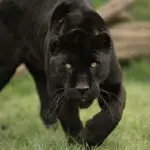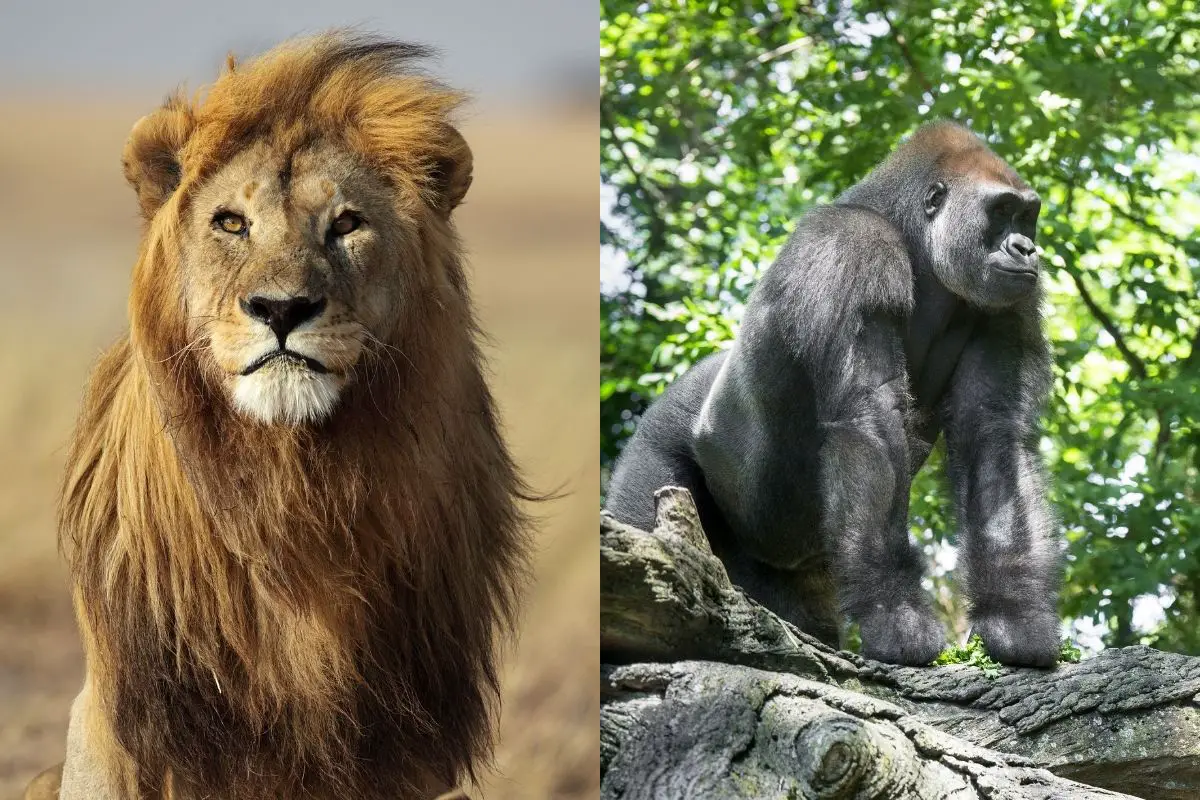Ever wondered how powerful a lion’s bite really is? With a jaw force of 650 PSI, lions pack enough crushing power to snap bones and take down prey twice their size. But how does this compare to other big cats, and what makes the lion’s bite so devastating?
Understanding bite force isn’t just about satisfying curiosity—it reveals the evolutionary adaptations that make these apex predators so successful. From the massive jaguar with its bone-crushing 1,500 PSI to the swift cheetah at 475 PSI, each big cat’s bite tells a story of survival and specialization.
The Science Behind Lion Bite Force
A lion bite force of 650 PSI might seem modest compared to some animals, but it’s perfectly engineered for their hunting style. Male lions typically generate more force than lionesses due to their larger skull and jaw muscles, with some exceptional individuals reaching up to 691 PSI.
This incredible power comes from several anatomical features:
Massive Jaw Muscles
The lion’s temporalis and masseter muscles are evolutionary marvels. These powerful muscle groups connect the skull to the mandible, creating a biological vice that can maintain crushing pressure for extended periods. The temporalis muscles, located near the temples, provide rapid jaw closure, while the broad masseter muscles at the cheeks deliver sustained crushing force.
Weaponized Canine Teeth
Adult male lions possess canine teeth measuring 2.5-3 inches in length—perfect for piercing thick hides and delivering fatal puncture wounds. These aren’t just sharp; they’re positioned to maximize the transfer of that 650 PSI force into concentrated pressure points on prey.
Specialized Carnassial Teeth
Behind those famous canines lie the carnassials—blade-like teeth that function as biological scissors. When a lion clamps down, these teeth shear through flesh and sinew with surgical precision, allowing rapid consumption of prey.
Big Cat Bite Force Championship: Who Reigns Supreme?
The big cat world is filled with powerful predators, each with unique adaptations. Here’s how they stack up in the bite force arena:
Jaguar: The Bone Crusher (1,500 PSI)
The jaguar takes the crown with an astounding 1,500 PSI bite force—more than double a lion’s power. This incredible force allows jaguars to crush turtle shells and even caiman skulls. Their hunting strategy often involves a direct skull bite, instantly killing prey. Understanding the differences between jaguars, leopards, and cheetahs helps explain why jaguars evolved such devastating bite power.
Tiger: The Apex Predator (1,000-1,200 PSI)
Tigers, whether Siberian tiger or Bengal varieties, generate 1,000-1,200 PSI with their massive 3.9-inch canines. This makes them formidable hunters capable of taking down prey as large as water buffalo. The white tiger, though rare, possesses the same incredible bite force as their orange cousins.
Lion: The Social Hunter (650 PSI)
While not the strongest individual bite, lions make up for it with coordinated pack hunting. Their 650 PSI is perfectly suited for their social hunting strategy, where multiple lions work together to bring down large prey like zebras and wildebeest.
Mountain Lion/Cougar: The Solitary Stalker (400 PSI)
Mountain lions generate around 400 PSI, sufficient for their preferred prey of deer and elk. These solitary hunters rely more on stealth and precision than raw crushing power. The mystery of mountain lions in Missouri continues to fascinate wildlife enthusiasts as these elusive cats expand their range.
Leopard: The Versatile Climber (300-310 PSI)
Leopards may have the “weakest” bite among big cats, but their 310 PSI is perfectly adapted for their diverse diet and tree-climbing lifestyle. They compensate with incredible stealth and the ability to haul prey twice their weight into trees.
Cheetah: The Speed Demon (475 PSI)
Despite being built for speed rather than strength, cheetahs actually have a respectable 475 PSI bite force. Their hunting strategy relies on exhausting prey through high-speed chases, then using their bite to suffocate rather than crush.
Smaller Cats: The Bobcat and Lynx Connection
While discussing big cats, it’s worth examining their smaller relatives. The bobcat, weighing just 11-30 pounds, generates 100-150 PSI—impressive for its size. Understanding bobcat vs lynx differences reveals how these cats adapted different hunting strategies.
Bobcat Territories and Behavior
Bobcats maintain territories ranging from 1-18 square miles depending on prey density. Their bobcat scat often contains fur and bone fragments, evidence of their effective hunting despite their smaller bite force. Missouri’s bobcat population has recovered significantly, with an estimated 15,000-20,000 individuals now roaming the state.
Bobcats in various states show remarkable adaptability:
- Wisconsin bobcats: Population of 2,000-3,000 in recovering forests
- Bobcats in California: Thriving in diverse habitats from deserts to mountains
- Bobcats in Connecticut: Rare but increasing sightings in recent years
- Arizona bobcats: Well-adapted to desert environments
Identifying Bobcat Sign
For wildlife enthusiasts, recognizing bobcat presence involves understanding their territorial markers. What does bobcat poop look like? Bobcat scat is typically 3-5 inches long, cylindrical, and often contains visible fur and bone fragments. Unlike coyote scat, bobcat droppings are usually buried or placed in prominent locations for scent marking.
When comparing bobcat vs mountain lion tracks, remember that bobcat prints are much smaller (2 inches) and typically don’t show claw marks, while mountain lion tracks can reach 4 inches and may show claws in soft substrate.
The Rare and Extraordinary: White Lions and Conservation
Among the most fascinating big cats are white lions—not albino, but leucistic animals with a rare genetic condition. Are white lions real? Absolutely. These magnificent creatures exist primarily in South Africa’s Timbavati region, with fewer than 100 remaining in the wild.
White Lion Facts and Conservation
White lions possess the same 650 PSI bite force as their tawny relatives, but their pale coloration makes hunting more challenging in the African savanna. Conservation efforts focus on protecting their natural habitat and maintaining genetic diversity.
Similarly, white tigers captivate audiences worldwide, though they’re extinct in the wild. These leucistic tigers retain the full 1,000+ PSI bite force of Bengal tigers, making them formidable predators despite their striking appearance.
Beyond Big Cats: Bite Force Champions
To fully appreciate lion bite force, consider how it compares to other powerful biters:
- Saltwater crocodile: 3,700 PSI (strongest measured bite)
- Grizzly bear: 1,160 PSI with a skull thickness of up to 2 inches
- Hippopotamus: 1,825 PSI (strongest land mammal)
- Gorilla: 1,300 PSI (powerful despite vegetarian diet)
- Hyena: 1,100 PSI (bone-crushing specialists)
Even smaller predators pack surprising power. A coyote generates 250 PSI, while the rare white coyote or leucistic coyote maintains the same bite force despite its unusual coloration.
Lion Behavior and Bite Force Application
Understanding when and how lions use their 650 PSI bite reveals the complexity of their social structure and hunting strategies. Do male lions mate with their daughters? In healthy wild populations, this is naturally prevented as young males are expelled from prides before reaching sexual maturity, typically around 2-3 years old.
Hunting Applications
Do lions eat snakes? Occasionally, but their bite force is typically reserved for larger prey. Lions primarily hunt zebras, wildebeest, and buffalo—animals that require their full 650 PSI to dispatch quickly and safely.
Do lions attack humans? Rarely, and usually only when threatened, injured, or protecting cubs. Their powerful bite makes such encounters extremely dangerous, which is why maintaining safe distances in lion habitat is crucial.
Conservation and Future Outlook
With only 20,000-25,000 wild lions remaining globally, understanding and appreciating their remarkable adaptations becomes increasingly important. The Asiatic lion population has grown to 674 individuals in India’s Gir Forest, while Ethiopian lions represent unique genetic lineages requiring protection.
Conservation efforts must address:
- Habitat fragmentation reducing prey availability
- Human-wildlife conflict in expanding agricultural areas
- Climate change affecting prey migration patterns
- Genetic diversity maintenance in small populations
The story of the lion’s 650 PSI bite force is ultimately a story of evolutionary perfection—a tool honed over millions of years to create one of nature’s most efficient predators. While they may not have the strongest bite in the animal kingdom, lions have achieved something perhaps more impressive: the perfect balance of power, strategy, and social cooperation that has made them true kings of their domain.
Whether you’re tracking bobcats in your local wilderness, marveling at white lions in conservation programs, or simply appreciating the incredible diversity of big cat adaptations, remember that each species represents millions of years of evolutionary refinement. The lion’s bite force isn’t just a number—it’s a testament to the power of natural selection and the importance of protecting these magnificent predators for future generations.
- Bengal Cat vs Wild Bengal Tiger: Complete Comparison 2025 - October 31, 2025
- Complete Wild Cat Spotting Guide for Hikers 2025 - October 31, 2025
- Lynx vs Bobcat: Complete Field Identification Guide 2025 - October 30, 2025





